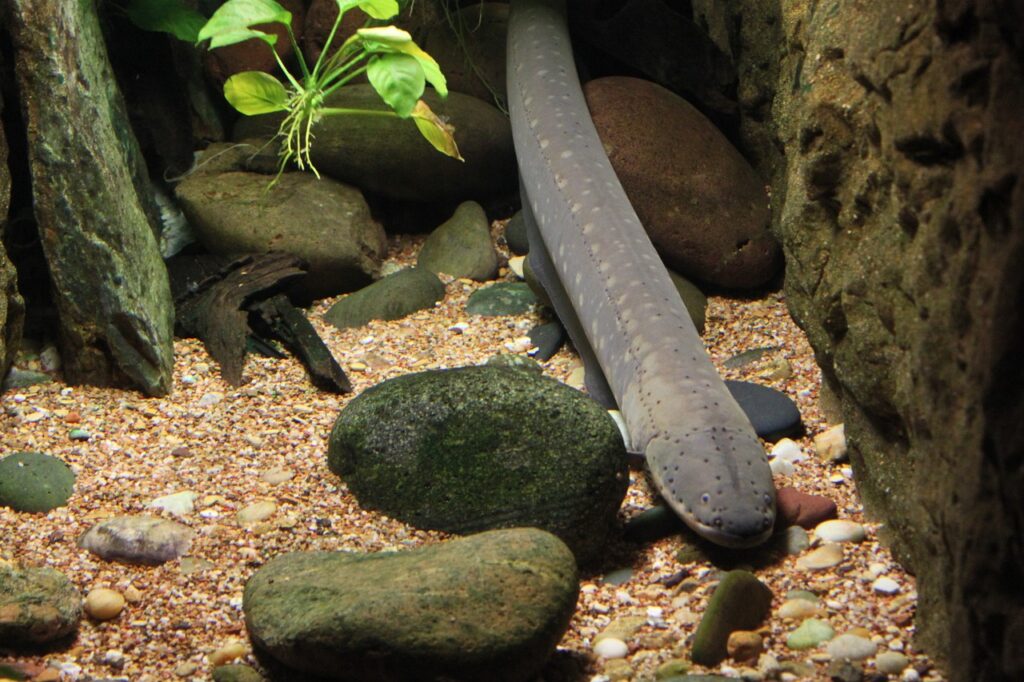Imagine a world without turtles. It’s hard to fathom, right? These remarkable creatures have been around for millions of years, but their survival is facing an increasing threat due to human activities. One crucial factor that plays a significant role in their well-being is the depth of the water in their habitats. In this article, we will explore the importance of finding the right balance of water depth for turtles, understanding how it affects their behavior, reproduction, and overall population. So, if you’re ready to dive into the fascinating world of turtle habitats, let’s get started!
Why Water Depth Matters
The Role of Water Depth in Turtle Biology
Water depth plays a significant role in the biology of turtles. It is crucial for their overall health, behavior, and reproduction. Turtles are generally aquatic creatures, and water serves as their primary habitat. They rely on water to regulate their body temperature, obtain food, and engage in social interactions. Water depth directly impacts the availability of resources and influences various aspects of their lives.
How Water Depth Affects Turtle Behavior
The depth of water in turtle habitats greatly influences their behavior. Turtles exhibit different behaviors depending on the water depth they inhabit. In shallower waters, they are more likely to bask in the sun, searching for warmth and vital UV radiation. Additionally, turtles tend to be more mobile and active in shallower water, enabling them to navigate their surroundings and find food more efficiently. On the other hand, deeper water can provide turtles with security and protection, allowing them to escape potential predators and find sanctuary.
The Importance of Adequate Water Depth for Reproduction
Adequate water depth is vital for successful turtle reproduction. Female turtles typically lay their eggs in sandy or soft substrates near the water’s edge, often digging a nest. The depth of the nest is crucial in maintaining a stable environment for the developing embryos. Insufficient water depth may result in desiccation and the subsequent failure of the eggs to hatch. Moreover, water depth also plays a role in courtship behavior and mate selection, influencing the reproductive success of turtle populations.
Factors Affecting Water Depth in Turtle Habitats
Geographical Location and Climate
Geographical location and climate have a significant impact on water depth in turtle habitats. Different regions experience varying levels of rainfall and evaporation, which directly affect the water levels in ponds, lakes, rivers, or wetlands. Areas with higher precipitation tend to have deeper water bodies, providing favorable conditions for turtles. In contrast, regions with scarce rainfall or high evaporation rates may have shallow or intermittent water sources, posing challenges for turtles to thrive.
Aquatic Vegetation and Algae Growth
Aquatic vegetation and algae growth can affect water depth in turtle habitats. Some turtles rely on these plants as a food source, creating a delicate balance between their consumption and growth. Excessive vegetation growth can lead to shallower water levels as plants extract water and nutrients from the environment. Conversely, the absence of vegetation can result in deeper water, potentially making it challenging for turtles to access food or basking sites.
Human Interference and Habitat Modifications
Human interference and habitat modifications are significant factors affecting water depth in turtle habitats. Alterations to natural water bodies, such as damming or diverting water sources, can substantially impact water depth. Additionally, human activities like dredging, land development, or channelization can cause changes in water levels, shifting the equilibrium and affecting turtle habitats. It is crucial to consider the impact of human activities on water depth to ensure the preservation and sustainability of turtle populations.

Finding the Ideal Water Depth
Understanding the Species’ Natural Habitat
To find the ideal water depth for turtles, it is essential to understand their species-specific natural habitat requirements. Different turtle species have varying preferences for water depth, ranging from shallow to deep water bodies. Researching the natural habitats and behavior of specific turtle species can provide valuable insights into their ideal water depth. This knowledge can guide conservation efforts and inform habitat management strategies to ensure the well-being and survival of the turtles.
Considerations for Captive Turtle Habitats
In captive turtle habitats, finding the ideal water depth involves considering several factors. It is necessary to replicate the natural environment as closely as possible, providing turtles with ample space to swim, access food, and bask. The water depth should allow turtles to fully submerge and perform their natural behaviors while also providing shallow areas for basking and resting. Careful consideration of the turtle species’ requirements and regular monitoring of water conditions are crucial for maintaining an optimal captive habitat.
Balancing Water Depth with Land Area
Balancing water depth with land area is essential in turtle habitats. Turtles require both aquatic and terrestrial environments to meet their biological needs. Providing adequate land area within the habitat is crucial for turtles to bask, dig nests, and engage in other behaviors outside of the water. It is important to maintain a harmonious balance where there is sufficient water depth to allow for swimming and natural behaviors, while also providing enough land area for turtles to fulfill their terrestrial needs.
Consequences of Inadequate Water Depth
Stress and Physical Health Issues
Inadequate water depth can lead to stress and physical health issues for turtles. Insufficient water depth restricts their ability to swim and move freely, disrupting their natural behavior patterns. This confinement and lack of space can result in elevated stress levels, negatively affecting their overall well-being. Additionally, turtles may develop physical health issues, such as shell deformities or stunted growth, due to the lack of adequate water depth.
Implications for Growth and Development
Inadequate water depth can significantly impact the growth and development of turtles, especially during their early stages of life. Turtles require appropriate water depth to facilitate their natural feeding and growth processes. Insufficient water depth may limit their access to food sources and hinder their ability to grow and develop properly. This can have long-term consequences on their overall size, weight, and overall fitness.
Negative Impact on Reproduction
Insufficient water depth can have a negative impact on turtle reproduction. As mentioned earlier, female turtles need a specific water depth to lay their eggs and create a suitable nesting environment. Inadequate water depth can disrupt this process and impede successful reproduction. Lack of nesting sites or unstable nest conditions can lead to reduced hatching success rates, jeopardizing the survival and population growth of turtle species.

Risks of Excessive Water Depth
Safety Concerns for Hatchlings and Young Turtles
Excessive water depth poses safety concerns for hatchlings and young turtles. In deep water, these vulnerable individuals may find it difficult to navigate and swim effectively. It increases the risk of drowning as they may struggle to reach the surface for air. Excessive water depth can also impede their ability to access suitable basking sites, limiting their exposure to essential UV radiation and thermoregulation.
Limited Access to Basking Sites
Turtles rely on basking to regulate their body temperature and acquire essential UV radiation. Excessive water depth can limit their access to suitable basking sites, affecting their thermoregulation and overall health. Turtles require areas where they can safely climb out of the water and expose themselves to sunlight. Without adequate access to basking sites, turtles may experience a compromised immune system, decreased metabolism, and weakened physical health.
Managing Water Depth in Flood-Prone Areas
Flood-prone areas present unique challenges in managing water depth for turtle habitats. Periodic flooding can result in excessive water depth, disrupting the equilibrium of turtle habitats. In such areas, it is crucial to implement appropriate measures to manage water levels during flood events. Designing habitats with elevation or creating artificial basking areas can provide sanctuary for turtles in flood-prone regions, ensuring their survival during challenging environmental conditions.
Maintaining Water Depth in Turtle Habitats
Water Circulation and Filtration Systems
Maintaining water depth in turtle habitats involves the implementation of water circulation and filtration systems. These systems help regulate water levels and quality, ensuring a healthy and stable environment for turtles. Water pumps and filters can remove impurities and maintain optimal water conditions. Proper circulation also prevents stagnant water, reducing the risk of algae growth and maintaining suitable water depth for turtles.
Aquatic Plant Management
Managing aquatic plants is crucial in maintaining water depth in turtle habitats. Strategic control of vegetation growth can prevent excessive water depth by reducing water absorption by plants and their root systems. Regular removal of excessive vegetation helps preserve suitable water levels, ensuring turtles have adequate space and accessibility within their habitats. Proper management of plants also maintains water quality and prevents imbalances in the ecosystem.
Regular Maintenance and Monitoring
Regular maintenance and monitoring are essential for maintaining water depth in turtle habitats. Conducting routine assessments of water levels and quality allow for necessary adjustments to be made. Monitoring water depth ensures that it remains within the ideal range for turtles, preventing any potential risks associated with inadequate or excessive depth. Regular maintenance of equipment, such as pumps and filters, guarantees their effectiveness in maintaining optimal water conditions.

Case Studies: Successful Water Depth Management
Conservation Efforts for Endangered Turtle Species
Various conservation efforts have successfully implemented water depth management strategies to protect endangered turtle species. These initiatives focus on preserving and restoring natural habitats with the right water depths required by each species. By addressing human-induced habitat alterations and establishing protected areas, these projects have helped stabilize turtle populations. Collaborative efforts between conservation organizations, scientists, and local communities have played a vital role in ensuring the success of water depth management for the conservation of endangered turtles.
Public and Private Turtle Sanctuaries
Public and private turtle sanctuaries have successfully managed water depth to provide a safe and suitable environment for turtles. These sanctuaries prioritize maintaining optimal water conditions and balance between land and water areas. With a strong focus on habitat preservation and regular monitoring, these sanctuaries have become crucial in safeguarding turtle populations. By offering educational programs and promoting research, they actively contribute to the broader understanding and conservation of turtle habitats.
Community Involvement in Habitat Restoration
Community involvement in habitat restoration has proven effective in managing water depth for turtle habitats. Local communities and volunteers participate in habitat restoration projects, such as restoring wetlands or creating artificial nesting sites. By working together, these community-driven initiatives have successfully improved water depth conditions and restored vital turtle habitats. The engagement of local communities fosters a sense of stewardship and promotes long-term sustainability in turtle habitat conservation efforts.
Challenges and Future Perspectives
Climate Change and Its Impact on Water Levels
One of the major challenges in maintaining water depth in turtle habitats is climate change. Rising temperatures and erratic rainfall patterns directly influence water levels in natural habitats. Climate change-induced droughts lead to reduced water availability, causing shallower water bodies and affecting turtle populations. Conversely, intense rainfall events and flooding can result in excessive water depth, imposing risks on turtles’ survival. Understanding and mitigating the effects of climate change on water levels are crucial for ensuring the long-term survival of turtle species.
Balancing Human Needs and Turtle Habitat Conservation
Balancing human needs with turtle habitat conservation poses a challenge in managing water depth. Human activities often require alterations to natural water bodies, potentially impacting turtles’ preferred water depths. Strategies to address this challenge involve working collaboratively with stakeholders to implement sustainable practices that minimize negative impacts on turtle habitats. By considering both human needs and ecological requirements, a balance can be achieved, enabling the coexistence of human activities and the preservation of turtle populations.
Collaborative Research and Knowledge Exchange
Collaborative research and knowledge exchange are imperative for addressing the challenges and future perspectives of managing water depth in turtle habitats. Scientists, conservation organizations, and local communities must work together to conduct research, share insights, and develop effective management strategies. This collaboration fosters a collective understanding of turtle biology and habitat requirements, enabling informed decision-making and enhancing conservation efforts. By sharing knowledge and engaging in ongoing research, we can continually improve water depth management practices and ensure the protection of turtle populations and their habitats.
Conclusion
Water depth plays a crucial role in turtle biology and has significant impacts on their behavior, reproduction, and overall well-being. Understanding the factors affecting water depth, finding the ideal balance, and managing it effectively are essential for the conservation and sustainability of turtle populations. Maintaining suitable water depth involves considering the natural habitat, balancing land and water areas, and implementing appropriate strategies such as water circulation, vegetation management, and regular monitoring. Successful case studies and community involvement demonstrate the importance of collaborative efforts in preserving turtle habitats. However, challenges such as climate change and balancing human needs require continued research, knowledge exchange, and sustainable practices. By prioritizing the optimal water depth for turtles, we can ensure their long-term survival and contribute to the broader conservation of these fascinating creatures.
